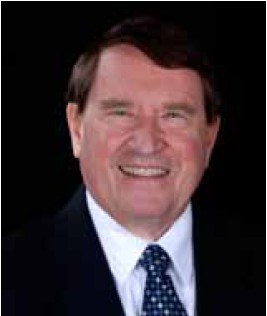The rise of a non-communicable disease epidemic
University of Washington School of Medicine, Gig Harbor, WA, USA
|
Editorial
The rise of a non-communicable disease epidemic
University of Washington School of Medicine, Gig Harbor, WA, USA
|
|
J Thorac Dis 2012;4(3):238-239. DOI: 10.3978/j.issn.2072-1439.2012.06.01
|
 The data Prof. Bhome presents are mainly epidemiologic findings concerning COPD in different
regions in India and are often incomplete, yet the overall conclusions about COPD that emerge
are convincing. One reason for this is that the available data from India align closely with more
extensive epidemiologic and public health information about COPD in China that has recently
been reviewed (2,3). These similar findings concerning COPD from the world’s two most populous
nations deliver an urgent message to all countries to carry out epidemiological studies and other
COPD research to understand the nature of this global epidemic and to take action to help COPD
patients and others at risk of the disease. It is not a coincidence that COPD is rampant in these two
countries, both of which have been undergoing massive industrialization in recent decades.
The data presented from WHO India (4), which suggest that COPD care using Indian clinical
practice guidelines can reduce the cost of COPD care by 80-90%, are not very credible. Unlikely
assumptions are made in this analysis, and these assumptions are then extrapolated for the whole
country. However, as Prof. Bhome concludes, even if the specific number does not hold up, there
is good reason to accept the concept that COPD care costs can be substantially reduced by such
measures as early diagnosis, smoking cessation efforts and reduction of other toxic inhalations, and
focusing on inexpensive, effective therapies that can improve patients’ lung function and quality of
life and also reduce COPD exacerbations and hospitalizations.
Prof. Bhome’s review of Indian studies of COPD in non-smokers and in users of biomass
and other fuels documents the importance of air pollution from these fuels and other sources
in the etiology of COPD. These data add to the studies conducted by Prof. Nanshan Zhong and
his colleagues in China in collaboration with Prof. Sonia Buist and the BOLD (Burden of Lung
Disease) Initiative (5), which found similar results in China and elsewhere in the world (6).
However, many medical groups continue to focus entirely on smoking cessation to try to prevent
COPD. It is true that for many years, the tobacco industry spent enormous amounts of money to try to refute or confuse the facts relating to the many adverse
health consequences of tobacco use (7), and the reality of these
effects is incontrovertible, based on a huge body of scientific
evidence (8). Still, other documented causes and risk factors for
COPD need to be better understood and confronted as well.
Similarly, many large corporations whose manufacturing
and products generate toxic auto, airplane, energy generation,
and industrial emissions attempt to portray themselves as
environmentally conscious, and would also like people to believe
that COPD is only caused by smoking. However, if we are to
successfully combat COPD, we need to understand all the causes
of the disease and act to prevent COPD as well as to diagnose
COPD early in its course. We should focus on reducing these
toxic emissions that are so damaging to the earth’s ecology. For
example, the Surya Project in India (9), which attempts to use
solar energy and other clean technologies to reduce indoor and
outdoor pollution caused by biomass and other polluting fuels,
is an example of important environmental protection efforts that
may be able to combat the COPD epidemic. Hopefully, as we
more fully understand the etiology of COPD, we will be able to
expand such efforts.
Physicians tend to think of diseases as separate entities, when
they are often a part of groups of diseases resulting from root
causes such as pollution or obesity, or may be co-morbidities
of a disease like COPD, such as lung cancer, depression, and
heart failure. We should not lose sight of the huge burden these
diseases place on patients. I believe that we should see both
communicable and non-communicable diseases as proxies for
human misery, so that we do not lose sight of the root causes that
need to be addressed in order to maximally benefit people worldwide.
A non-communicable disease epidemic like COPD usually
reflects toxic pollution caused by human commerce and society.
This makes COPD a proxy for the misery of all life on earth since
pollution affects not only humans but all species on the planet. |
|
Acknowledgements
Disclosure: The author declares no conflict of interest.
|
|
References
Cite this article as: Grouse L. The rise of a non-communicable
disease epidemic. J Thorac Dis 2012;4(3):238-239. doi: 10.3978/
j.issn.2072-1439.2012.06.01
|